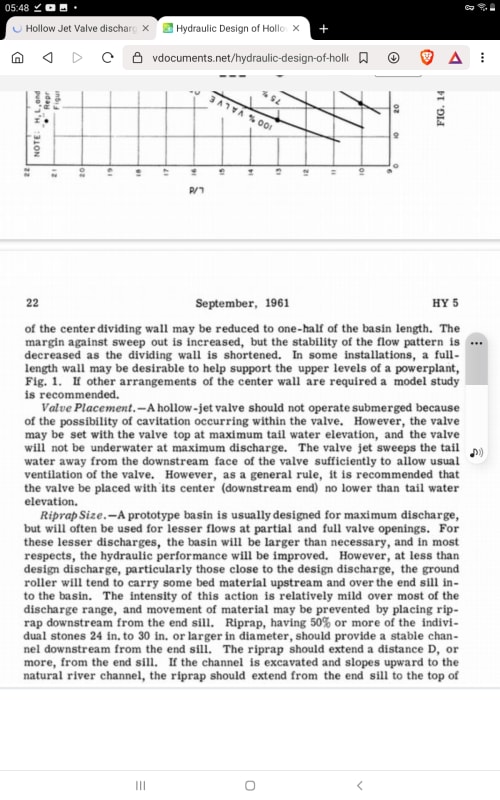Hello everybody:
In the dam of a hydroelectric plant there is a pipe to discharge the ecological flow. See Figure 1. The entrance to that pipe is at an elevation of 270 meters above sea level (masl). The maximum water level in the reservoir is 290 masl and the minimum water level is 280 masl. The pipe has a diameter of 0,80 m and a total length of 40 m.
A few days ago, the reservoir reached its maximum level and the operation of the valve was tested. The flowmeter associated with this pipe registered a reading of 4,5 m3/s.
The Contractor argued that the flowmeter was giving an erroneous reading, given that the flow to be discharged with that maximum head should be 8 m3/s.
Over time, the level in the reservoir dropped and, for now, it is not possible to verify the situation: if it is the flowmeter that gives the error or that the pipe does not actually evacuate the 8 m3/s.
According to hollow jet valve discharge tables, with the dimensions at stake: reservoir head and pipe diameter, it is possible to evacuate 8 m3/s.
But, in the technical literature on these valves, as shown in Figure 2, when the valve is connected to an outlet pipe, the length of this pipe must NOT be greater than 4 times the diameter of the valve.
Here the question arises, can the length of the outlet pipe be the cause of the flowmeter reading?
Can the value of 8 m3/s actually be delivered or not by the valve/pipe?
Thank you in advance for your comments on this query.
El que no puede andar, se sienta.

